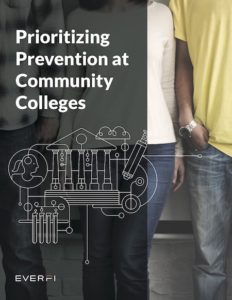How Two-Year and Four-Year Colleges Differ on Sexual Assault Prevention Efforts
Posted on Dec 06, 2017 | Comments 0
 A new report from EVERFI, the large educational technology company, examines the differences between community colleges and four-year institutions in how they deal with issues of drug and alcohol abuse, sexual misconduct and sexual assault, and mental health issues.
A new report from EVERFI, the large educational technology company, examines the differences between community colleges and four-year institutions in how they deal with issues of drug and alcohol abuse, sexual misconduct and sexual assault, and mental health issues.
The authors of the report note that “with shortened degree programs, distinct student populations, and typically non-residential campuses, community colleges have found themselves less frequently in the national spotlight than their four-year counterparts when it comes to student health and safety. This does not mean such problems are non-existent, only different.”
The study finds that community college students report higher rates of sexual assault before coming to campus than students at four-year institutions (18% vs 15%), as well as greater likelihood of relationship abuse both before and after arrival on campus (15% vs 10%). These findings illustrate the need for community colleges to increase outreach to students and ensure they have access to adequate resources both on campus and in the community.
The report found that community college students are more likely to use direct action to intervene than four-year students, who reportedly prefer more indirect actions such as creating a distraction or enlisting the help of friends. And while they are less likely to speak up when they hear something offensive, community college students are more likely to express concern when they see partner abuse.
The authors state that “for both community colleges and four-year commuter schools, a lack of resources and personnel directed at prevention is perhaps the greatest hurdle. Competing demands from jobs, family, and other outside commitments greatly limit the role that community college students can play in moving prevention efforts forward. Those same challenges also limit an administration’s access to students and, therefore, opportunities to deliver critical prevention messages.”
The full report, Prioritizing Prevention at Community Colleges, may be downloaded by clicking here.
Filed Under: Research/Study • Sexual Assault/Harassment








